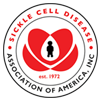Trusted Resources: Evidence & Education
Scientific literature and patient education texts
Hydroxycarbamide treatment and brain MRI/MRA findings in children with sickle cell anaemia
source: British Journal of Haematology
year: 2016
authors: Nottage KA, Ware RE, Aygun B, Smeltzer M, Kang G, Moen J, Wang WC, Hankins JS, Helton KJ
summary/abstract:Silent cerebral infarction (SCI) is the most common neurological abnormality among children with sickle cell anaemia (SCA). The effect of hydroxycarbamide (also termed hydroxyurea) on the development and progression of SCI is unclear. We evaluated brain magnetic resonance imaging/angiography (MRI/MRA) in children with SCA receiving long-term hydroxycarbamide therapy. Fifty participants (median 9·4 years, range 1·1-17·3) enrolled in the Hydroxyurea Study of Long-Term Effects (HUSTLE; NCT00305175) underwent brain MRI/MRA and laboratory evaluations before hydroxycarbamide initiation and after 3 and 6 years of treatment to maximum tolerated dose. SCI and vascular stenosis were evaluated. At baseline, 3 and 6 years, SCI were present in 19/50 (38%), 20/49 (41%), and 7/17 (41%), respectively. At 3 years, one child developed a SCI lesion, and another progressed (single lesion to multiple). Lower haemoglobin (Hb) (80 g/l vs. 86 g/l, P = 0·049), fetal Hb (5·0% vs. 10·4%, P < 0·001) and oxygen saturation (97% vs. 98%, P = 0·027) before hydroxycarbamide initiation were associated with SCI. No patients had vascular stenosis identified on MRA, transient ischaemic attack or stroke. Our data indicate that children receiving hydroxycarbamide over a 3- to 6-year period have a low rate of new or worsening cerebrovascular disease. Further studies are needed to confirm that hydroxycarbamide can prevent the onset and progression of SCI.
organization: St. Jude Children's Research Hospital, Memphis, USA; Cincinnati Children's Hospital Medical Center; Steven and Alexandra Cohen Children's Medical Center of New York; University of MemphisDOI: 10.1111/bjh.14235
read more full text
Related Content
-
Nitric Oxide, Phosphodiesterase Inhibitors and Soluble Guanylate Cyclase Stimulators as Candidate Treatments for Sic...Despite being described in the medical l...
-
Jennifer Doudna on ethics of gene editinghttps://www.youtube.com/watch?v=8Ijr1ccY...
-
Sickle Cell Retinopathy: A Focused ReviewPurpose: To provide a focused review of...
-
CTX001 Earns FDA’s Fast Track Status for Treating Sickle Cell DiseaseThe U.S. Food and Drug Administration (F...
-
Alzheimer’s Treatment Memantine Shows Promise in Treating Sickle Cell DiseaseMemantine, a standard treatment for Alzh...
-
Sisterly bond behind sickle-cell curehttps://www.youtube.com/watch?v=9S-xVGsR...
-
Siklos®, the first and only hydroxyurea-based treatment for pediatric patients with sickle cell anemia, now availab...Medunik USA, a company dedicated to impr...
To improve your experience on this site, we use cookies. This includes cookies essential for the basic functioning of our website, cookies for analytics purposes, and cookies enabling us to personalize site content. By clicking on 'Accept' or any content on this site, you agree that cookies can be placed. You may adjust your browser's cookie settings to suit your preferences. More Information
The cookie settings on this website are set to "allow cookies" to give you the best browsing experience possible. If you continue to use this website without changing your cookie settings or you click "Accept" below then you are consenting to this.




 +myBinder
+myBinder
